Cultural heritage
People without knowledge of their past, their origin and their culture are like a tree without roots.
Marcus Garvey
Hoyo de Manzanares has a rich cultural heritage. It is a town that has known how to maintain its identity over the years and continues to investigate its past. This is evident in the archaeological excavation of La Cabilda, which brings neighbors and visitors closer to the origins of the settlement of the mountain environment and allows them to be part of its heritage, since it is an excavation carried out with the participation of volunteers.
The intangible cultural heritage is also important, of which the greatest exponent is the Festival of Regional Tourist Interest of La Caldereta, which has its origin centuries ago and today is the main event in the municipality and manages to bring together thousands of people every year.
But there is much more …
The value of the stone. Quarrying and quarrying
A fundamental part of this cultural heritage is closely related to the importance that stonework has had in Hoyo de Manzanares, as can be seen in the stone architecture and the old granite quarries.
Granite is a material that has always been linked to the history of Hoyo de Manzanares and which became its main way of life until the 80s of the last century, thanks to the extraction of this valuable raw material that was exported to the capital .
In the space of the Plaza de Cervantes, with granite as a prominent element in its construction, is the monument to Los Canteros, a tribute paid by the town of Hoyo de Manzanares to the quarrying activity, an activity that had special importance in the village since the Middle Ages.
This traditional work was carried out in the numerous surrounding quarries, the remains of which can still be seen today at the foot of the Sierra del Hoyo, in any of the hiking routes.
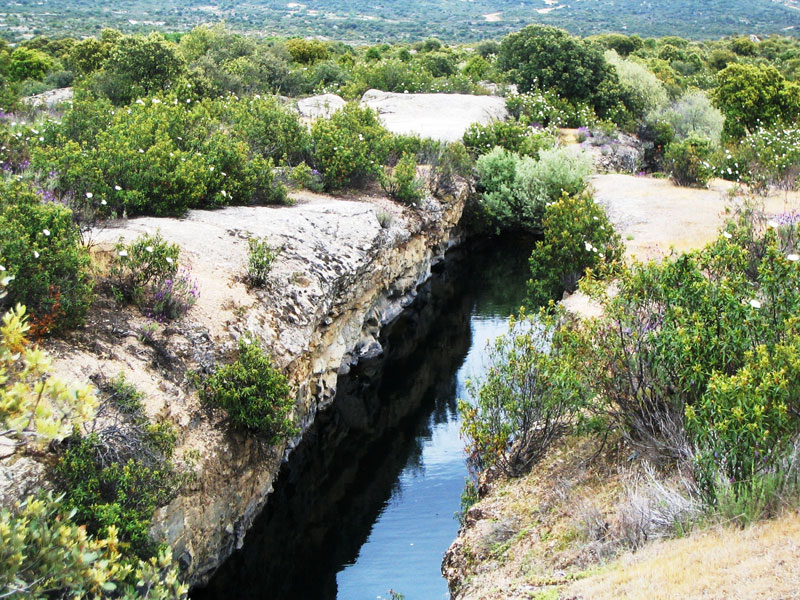
In the vicinity of the route of the Circular Route, in a section that runs at the foot of the Sierra del Hoyo, we can go off the road just a few meters to see the remains of the old porphyry quarries. A narrow vein of dark, greenish-gray material, different from granite, that was traditionally used for paving streets and highways.
On the same route, on Mount Egido, after passing the barrier, we notice the wooden fences that delimit other quarries, those of pink granite, also known as the Juan Señora Quarries.
Today, both quarries are filled with water and constitute an important biotope of the many that make possible the great biodiversity of our protected natural environment.
Traditional architecture. Our stone houses.
In the streets of Hoyo, granite continues to be the protagonist. There are still some reminiscences of the traditional stone houses, samples of a popular architecture that connects us with ancient ways of life.
The oldest, the rural type, are constructions turned towards the interior, designed to respond to the tasks of agriculture or livestock, with an interior patio around which other smaller constructions are arranged, composing a set. Few examples of this architecture are currently preserved.
The constructions of urban-rural typology date from the 19th century, where the house is conceived as an integral part of a town with its defined streets and its public spaces and an example of this are the stone benches that are built on the front facade. They generally belong to the final years of the 19th century and the beginning of the 20th century. They are scattered within the hull.
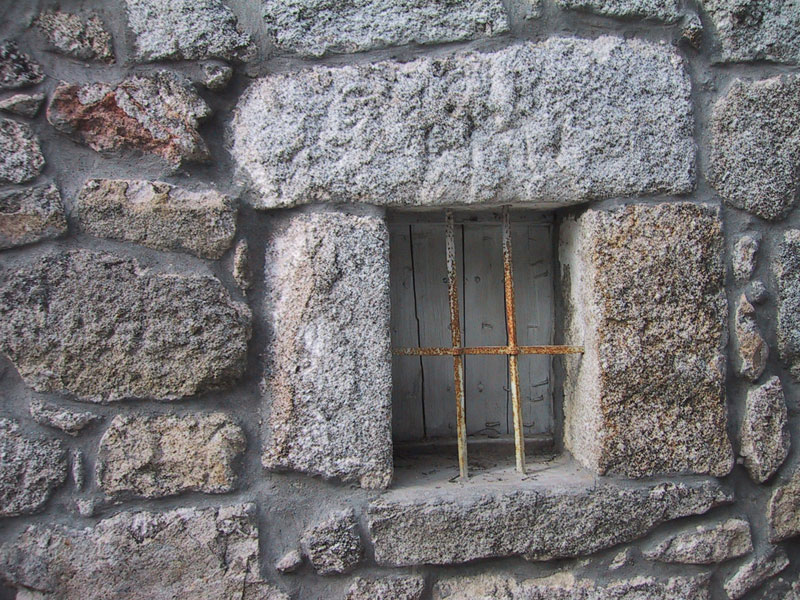
The best samples of both can be seen on Calle Erillas.
Between the 30s and 50s of the 20th century, life in Hoyo changed and therefore so did their houses. Now, around the main communication route of the town, Calle Hurtado, which connects Hoyo with its two neighboring towns, Torrelodones and Colmenar Viejo, the houses of totally urban typology emerge. They are houses dedicated to commerce and service. Two-storey buildings, in which the ground floor, open to the street, is dedicated to business and the main one to housing, which is accessed by a staircase on the rear facade. Among the few preserved examples, the well-known Casa Tanuchi stands out.
Finally, the Institución Libre de Enseñanza values the Sierra de Guadarrama and at the beginning of the 20th century the first people from Madrid began to arrive in Hoyo de Manzanares in search of contact with nature. They will be the architects of the first villas in Hoyo, houses surrounded by gardens in which to retire in search of rest. A good example of them can be found in the old Casa del Médico, today the headquarters of the Hoyo de Manzanares Social Services.
Plaza de Cervantes. Cultural center of the village
The Plaza de Cervantes concentrates the cultural life of Hoyo de Manzanares. The first schools were located here, today converted into the Medical Center and the teachers’ homes. In front of the Culture Center.
The building, built in 1990, is the headquarters of the Municipal Council of Culture, a body created for the management and coordination of the cultural activity of the municipality.
In it are the spaces for the Municipal Library, Exhibition and Conference Hall, Training Rooms and Workshops.
Our library has a bibliographic collection of 14,000 volumes, a reading service, room consultation and internet access. In addition, programs to promote Books and Reading, children’s storytelling and other events are carried out.
On summer nights, cultural activities go beyond the walls of the Center in the open-air auditorium that is installed in the square to carry out the Good Summer Nights cultural program with theater, dance, music and cinema sheltered by the Sierra of Hoyo.
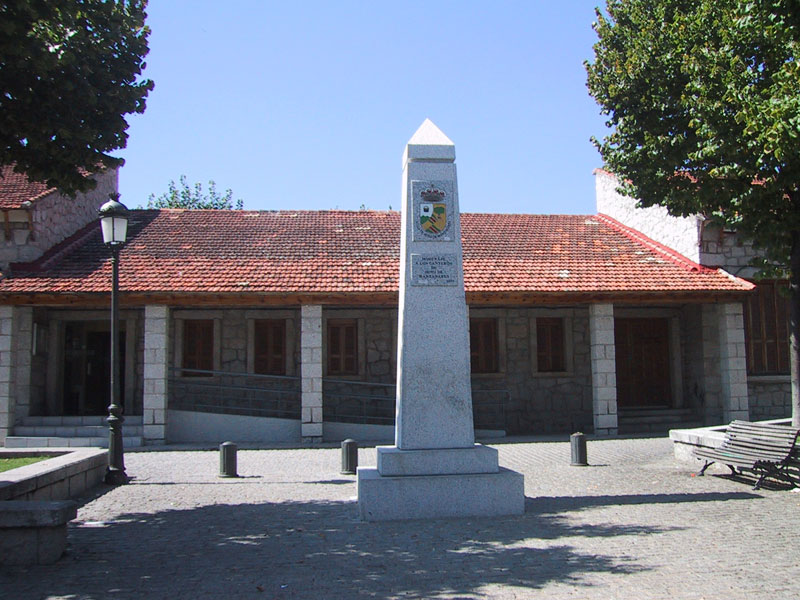
The region of water. The fountains
Hoyo de Manzanares is located in the Sierra de Guadarrama-Alto Manzanares, a region that extends from east to west, from Guadarrama and Los Molinos to Soto del Real and Miraflores and from the high peaks of Siete Picos, La Bola del Mundo or Cabeza de Hierro, to Hoyo de Manzanares, the southernmost municipality.
The waters coming from the high areas meander down the slopes to form rivers, two of them emblematic: the Guadarrama and the Manzanares. The abundance of water is one of the hallmarks of this region, in which there are a total of seven rivers and twelve reservoirs, as well as countless streams, wetlands and springs. Since ancient times, the neighbors of our towns have maintained a close relationship with water. In these municipalities there is a long tradition of building fountains, almost all of them carved in granite, some of them being several centuries old.
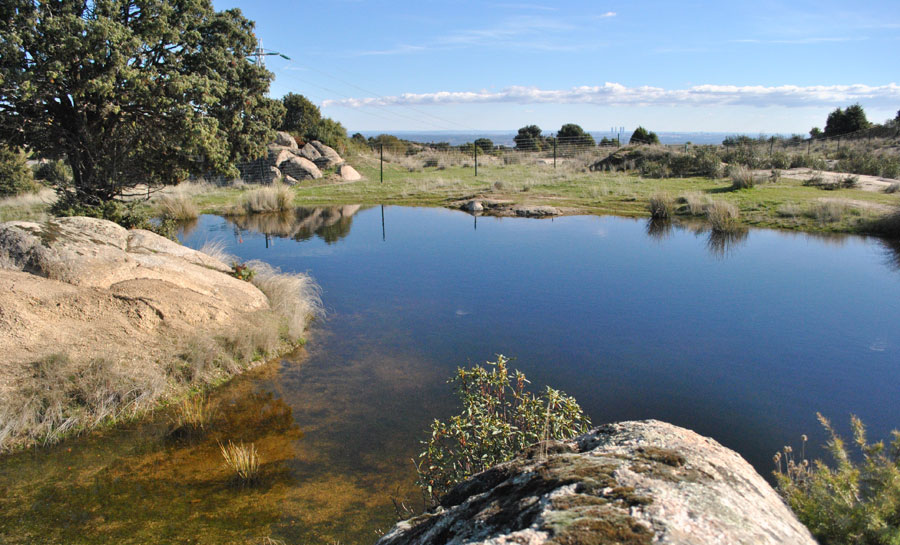
In Hoyo de Manzanares we can enjoy the landscapes of the water generated by the small streams that flow through its territory and, especially, the ponds and reservoirs such as Los Camorchos and La Berzosa, protagonists of some of the hiking marches organized by the town hall bring these natural spaces closer to our visitors.
In the urban area, the Fuente del Caño stands out, in the square of the same name, built in 1845, which supplied water to the neighbors until the arrival of running water. It is a granite fountain, with an oval basin and two simple pipes that give it its name and through which the waters from nearby springs formerly flowed.
The bringing of running water to Hoyo de Manzanares was celebrated with the Fountain of the Plaza de la Iglesia. Built in 1929, it has a more ornamental character, with its pediment, its continuous bench and its decoration of granite balls in the Escurial style. Among its jets of heads of lions in gilded bronze, the commemorative plaque and the year of its foundation can be read.
Plaza Mayor and the Town Hall
The Plaza Mayor that we see today began to take shape as we see it in the 50s. First with the construction of the town hall, a two-story building, made with granite from the surrounding quarries, with its portico and in which the side tower stood out. The photograph we see must be a little later than 1951 because the clock that we talk about below is already installed on the tower.
Shortly after this photo, the construction of the side wings began, within the Devastated Regions Plan launched for the reconstruction of the country after the Civil War. Those lateral wings projected later are the reason why the tower of our square is not in the center; They were not part of a single project, but the side tower of the City Hall building was embedded in this new design.
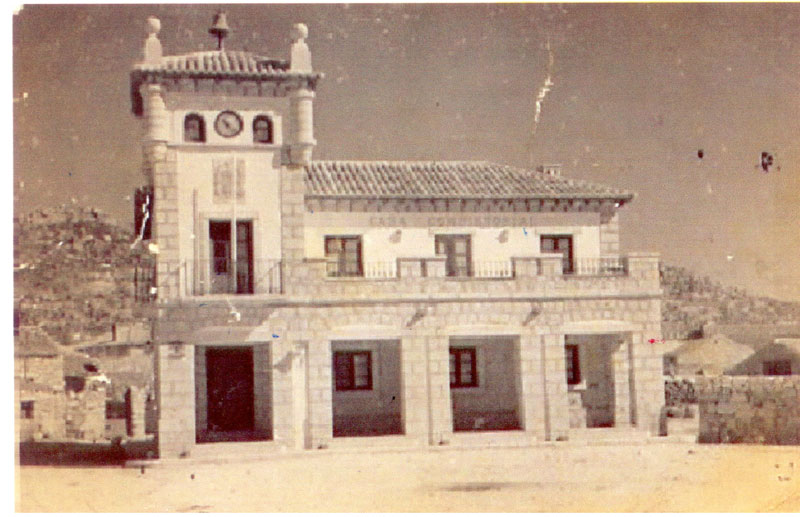
1950s City Hall. Photo provided by Aleida Pinto
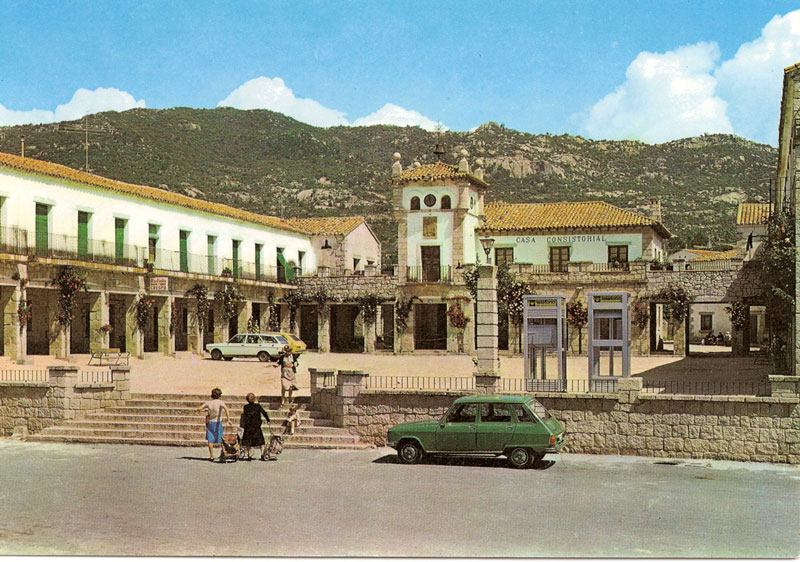
City Hall from the 70s. Photo courtesy of Raquel Mollá
The side spaces of the Plaza were used for the homes of disadvantaged families and although there are still private homes today, over time the City Council has gained spaces to locate the Tourist Office, the meeting place of number 2, the local Police , The Archive and Urbanism …
The last intervention, barely a year ago, removed the white coating of the first floor from the sides to expose the Hoyo granite.
The tower clock was installed in 1951, as Pilar García tells us in the article published in the second issue of the Apuntes del Ponderal magazine, edited by the Association of the same name. An installation that was celebrated with dancing and wine in the Plaza.
This jewel of mechanics cost at that time a whopping 41,867 pesetas, about € 250. On top of the tower was placed the bell that for 69 years has given us the hours, ringing at half past the hour. For this, a municipal worker is in charge of winding it every day with a crank.
The clock mechanism is precious and it is exposed to the public and working today on the first floor of the Town Hall.
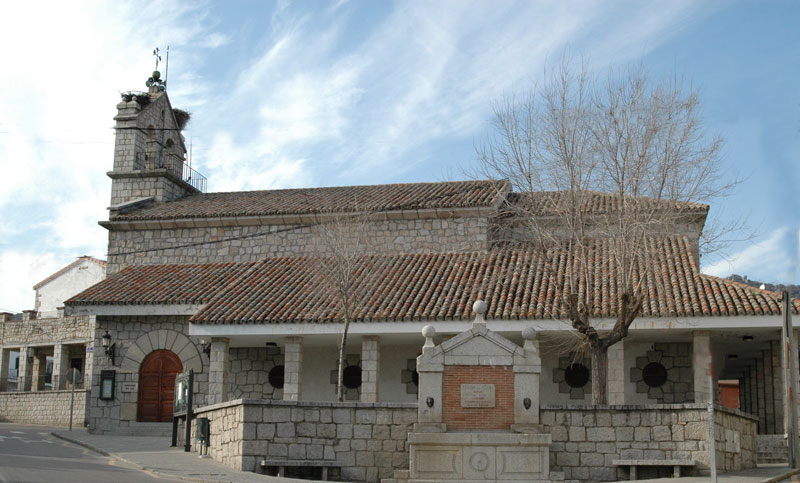
Las Cigüeñas Municipal Theater, photograph by Pilar Esteban
Las Cigüeñas Municipal Theater
Hoyo de Manzanares has two buildings declared Assets of Cultural Interest, one of them is the old church, located in the Plaza de la Iglesia, today rehabilitated and equipped to house the Las Cigüeñas municipal theater and which still preserves the Chapel of the Virgin of the Encina.
The other is the watchtower of La Torrecilla, a defensive building of Muslim origin of which vestiges are preserved, at present the land on which it is located belongs to the Army Academy of Engineers, so it is not possible to visit it.
Construction of the old church began in the 15th century and was completed in the 17th century, it has been listed as a Site of Cultural Interest since 1982. It was a modest church, with a single nave with two side chapels and a portico on its south side, modeled on the Segovian churches.

Movie sets
The jump to the big screen of Hoyo de Manzanares took place in 1962 with the occupation of two hectares in Monte de los Altillos. The first town in Western Spain with a stable character was built here, the set known as Golden City.
This set was one of the most prolific in our country until the mid-1970s. In it, more than a hundred films of the «spaghetti western» genre were shot, but there is one that stands out above the rest, «For a handful of dollars», which launched a then unknown Clint Eastwood to fame.

Site of La Cabilda
The archaeological site of La Cabilda is the place where Hoyo de Manzanares was born. A Visigothic town from the middle of the 7th century in which our first known neighbors settled. Here, at the foot of the Sierra de Hoyo and in front of the extensive landscape that opened before their eyes, they built their houses with the granite of the environment, the wood of the holm oaks and clay tiles.
The remains found so far tell us about a society that lived on livestock, hunting, gathering and residual agriculture. Other findings provide us with information about their daily activities, such as homes, a handy flyer or a wool card. The most important ones, such as the ponderal, a single piece, an official unit of weight, offers information about commercial transactions… But this is only what we know today.
The site is a living space where we carry out archaeological excavation campaigns every year. The one of 2018 discovered the remains of a singular building, a religious space that could make us think that we are facing a different settlement … Every year we advance more in the knowledge of who these first Hoyenses were.
One of the unique characteristics of this site is that it is excavated with the participation of volunteers, with a system known as public archeology, in which it is the neighbors, students or archeology enthusiasts who, under the direction and supervision of A team of professional archaeologists work every year to bring to light a new piece of this puzzle that is life in La Cabilda during the High Middle Ages.
To learn more about this site, you can sign up for the interpreted guided tours that we carry out each month with our local archaeologists.
In addition, around the site other activities are carried out at the end of the year, such as those collected in the November Visigoth project, or Archaeologists for a day, a program carried out in collaboration with the Community of Madrid in which we teach children all the excavation process of an archaeological site.
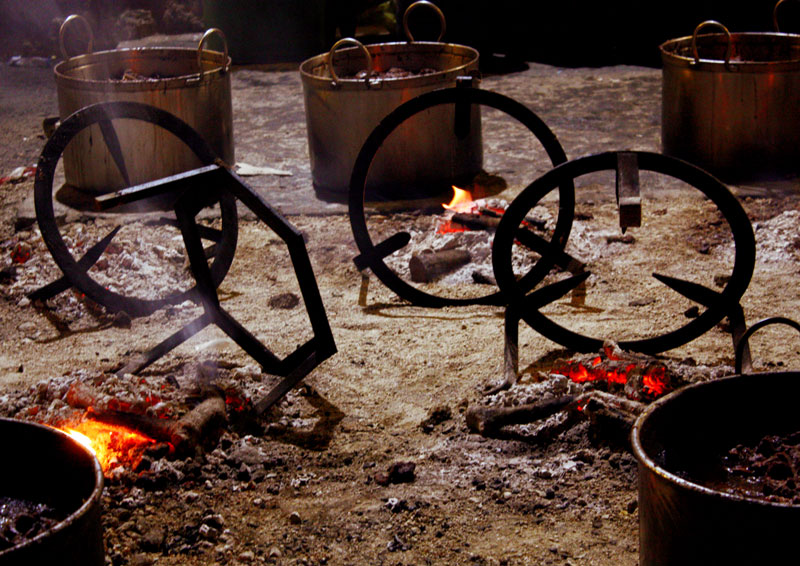
La Caldereta. FITR
La Caldereta has been declared a Festival of Regional Tourist Interest, it is a day of festivities that is known to have already been celebrated in 1767 to thank the Virgen de la Encina for the harvests.
It is a gastronomic festival that takes place around September 9 and consists of a chocolate, bullfighting festivities and, of course, the La Caldereta dinner, which brings together more than 6,000 people each year who enjoy our most traditional stew. Its recipe, whose main ingredient is bull meat, has been passed down from generation to generation.
Tradition says that in the past two bulls were fought in honor of the Patron Saint. The one for married couples was distributed among the families of the town, while that for single people was cooked following an old secret recipe that has survived to this day and is known only to the chef of the La Caldereta Association, in charge of its preparation and the one who will be his successor.
With that stew, the whole town was invited to this dinner in the Plaza Mayor. Today we invite you to enjoy our intangible cultural heritage that continues to keep alive a centuries-old tradition.
